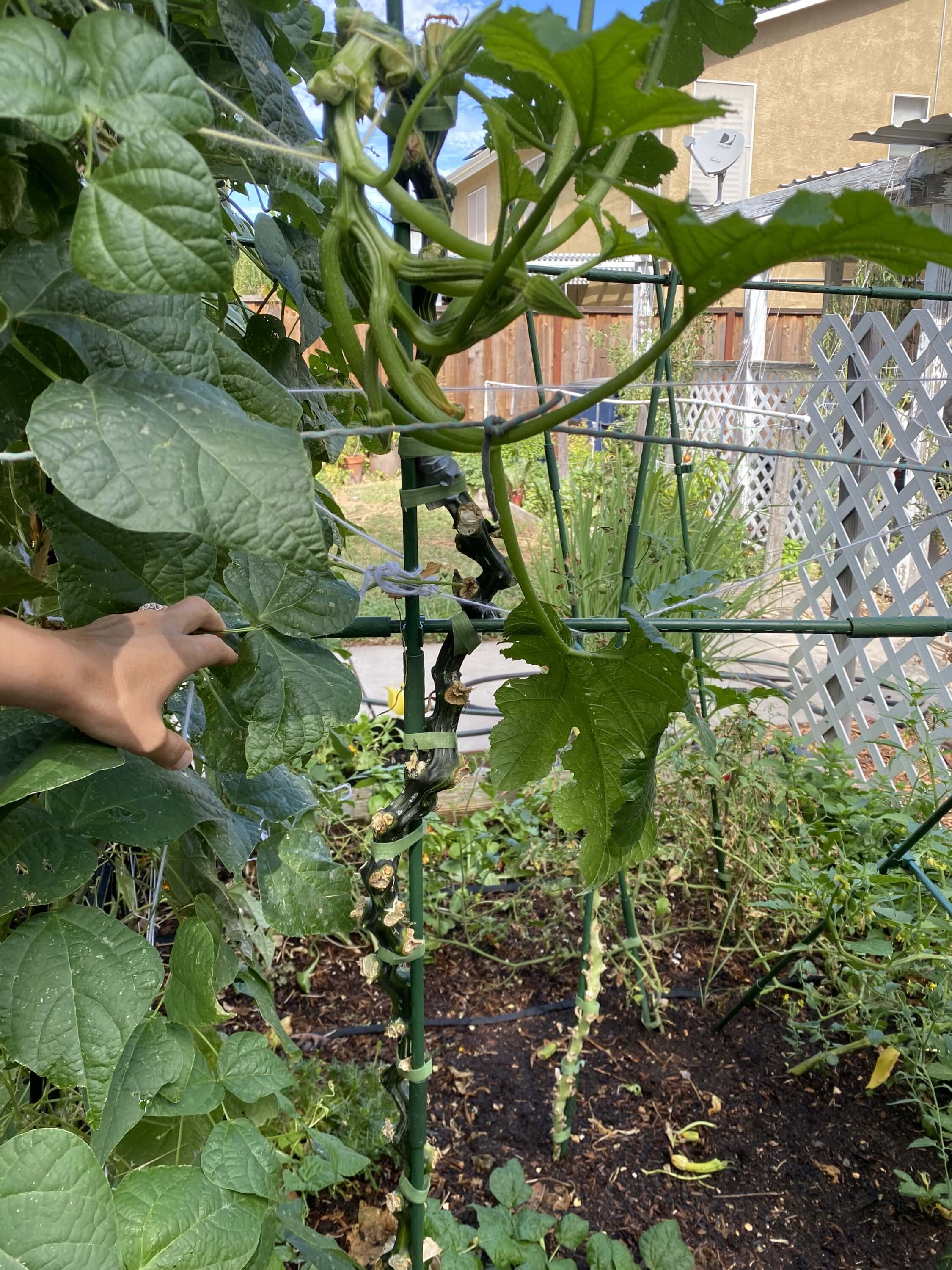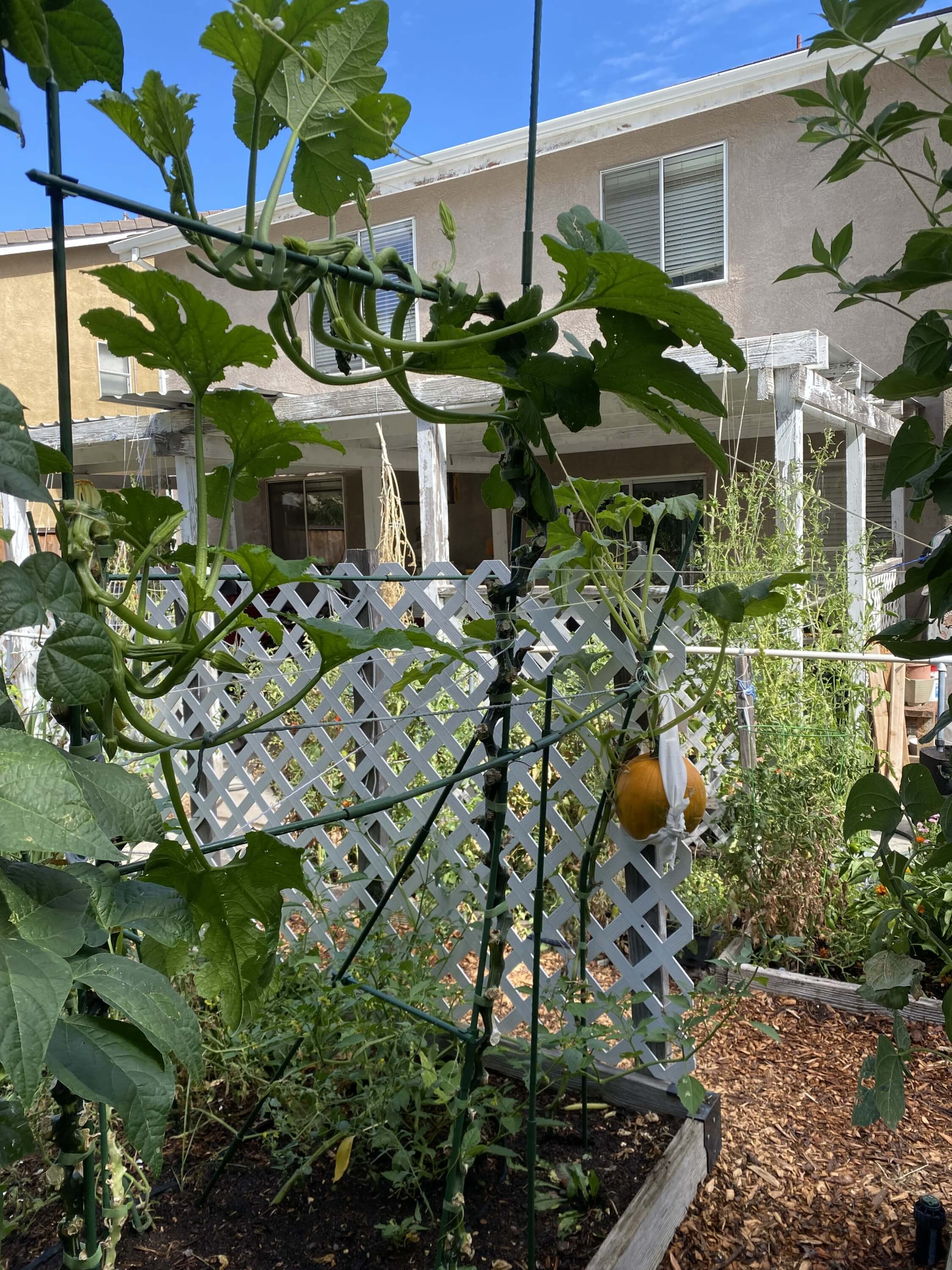Squash plants are famous for their sprawling vines, lush leaves, and heavy fruit—but that sprawling habit can quickly take over your garden space. When you plant them together, they can crowd each other and everything else leading to mildew, lower production, and difficulty in harvesting. If you have a smaller garden, raised beds, or simply want better airflow and easier harvesting, training squash to grow upright on stakes or supports is a game-changer.
Not only does vertical growing save space, but it also helps reduce pest and disease problems, keeps fruit cleaner, and makes for a more attractive garden.
Why Grow Squash Upright?
- Save Space: Perfect for small gardens or urban plots.
- Better Air Circulation: Reduces powdery mildew and fungal diseases.
- Cleaner Fruit: Keeps squash off damp soil.
- Easier Harvesting: No need to wade through sprawling vines.
- Pest Control: Less hiding space for squash bugs and slugs.
 |  |
These vines are 5 feet and 7 feet. I was away for 3 weeks and they bent away from the stakes, so I adjusted them to grow sideways with the stakes. You can see the pumpkin has a cloth sling attached to my sturdy trellis.
Choosing the Right Squash for Upright Growing
Most summer squashes (like zucchini, yellow squash, and pattypan) adapt well to staking. Some smaller-fruited winter squash varieties—such as acorn, delicata, or honey nut butternut—also do well when trained. For heavier fruits, you may need additional support like slings.
What You’ll Need
- Strong Stakes or Poles: 6–8 feet tall, made of wood, bamboo, or metal. I like these because you can keep making them taller as your plant grows and they come with connectors, however they are .43 inches and could be thicker- the larger vines bent them this year. I found these and the connectors and will try them next year - they are .78 inches thicker and will be more sturdy). The larger the squash, the heavier the stake needs to be - and be prepared for it to be 7 or 8 ft tall depending on the variety.
- Soft Plant Ties: Fabric strips, garden Velcro, or soft twist ties to prevent stem damage. (I prefer the velcro)
- Optional: Trellis netting or sturdy tomato cages for extra support.
Step-by-Step: Staking Squash Upright
1. Install Stakes Early
Place stakes or a vertical support structure in the soil at planting time to avoid disturbing roots later.
2. Select the Strongest Stem
Once your squash plant is established, choose the healthiest central stem to train upward. Remove side shoots or runners that try to sprawl outward.
3. Tie Gently, and Often
Every 5 inches of growth, loosely tie the main stem to your stake using soft ties. Allow enough space for the stem to expand without restriction.
4. Prune for Airflow
Remove older, lower leaves and spent flower stems as the plant grows to improve airflow and direct the plant’s energy toward fruit production. I love this method as it prevents powdery mildew and pests.
5. Support the Fruit (if Needed)
For heavier squash, use old pantyhose, mesh produce bags, or fabric slings to cradle the developing fruit and prevent it from pulling on the vine.
Extra Tips for Success
- Mulch Around the Base: Helps retain moisture and keep weeds down.
- Consistent Watering: Squash need even moisture for healthy fruit development.
- Fertilize Regularly: Use a balanced organic fertilizer or compost tea every 2–3 weeks.
- Watch for Pests: Inspect plants frequently for squash bugs and vine borers.
Final Thoughts
Staking squash plants takes a little extra attention, but the rewards are worth it: tidier beds, healthier plants, and a more productive harvest. Whether you’re working in a small space or just want a neater garden, vertical squash growing is a simple technique that can transform the way you grow this summer favorite. I like to plant other things below, so it expands the space for more food!
Happy gardening—and may your squash grow tall and plentiful!
My blogs contain some affiliate links.
Any purchase made is a blessing to my family at no extra cost to you!
Thank you for supporting us!







0 Comments